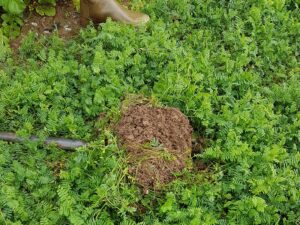
The new Agriculture Bill has fired a starting gun for England’s farmers to manage post-Brexit change, according to the Central Association of Agricultural Valuers.
Farmers have been awaiting details on what post-Brexit policy and payments will look like – and now they know, they should act, says Jeremy Moody, secretary and adviser to the CAAV.
“We have been given a clear timeframe for the complete removal of BPS for English farmers. BPS is to be phased out from 2021 to 2027 and then it will be gone. That gives a time window in which farmers and their advisers should review their businesses, consider how best to handle the likely erosion of margins, and deliver the necessary changes.”
Based on his own calculations, Mr Moody expects BPS to be cut by 5% in 2021, with those receiving larger payments seeing cuts of up to 25%, with further phasing out thereafter (see table). “This will release money for new land management schemes – although environmental payments will not replace that loss in margins.”
Farmers therefore need to plan ahead, whether to control costs or change enterprise, embrace innovation and new technology, make new investments, win planning permissions, manage succession, exploit assets, add value or improve marketing.
“Leaving it too late will see the business on the receiving end of change, not managing it,” explains Mr Moody. “The task is to find how best the business and the family can achieve and retain a financial margin in a more commercial and challenging world.”
Some of the money removed from BPS will go towards grants to help farmers become more efficient and productive, but there will be a limited time window in which they can be claimed. Defra has also confirmed that payments will no longer be linked to active farming – enabling retirement and freeing up land for change.
“While we inevitably await much detail, the Government has now clearly stated the direction of travel and a timetable for the progressive loss of BPS,” says Mr Moody. “With that knowledge, farmers now need to drive change in their businesses, with the support of professional advisers over a sensible time frame. After a period of great uncertainty, they can now lay solid and effective foundations for the future profitability of farming and rural land use, replacing income support with improved commercial viability.”
Table – Likely changes in BPS, based on CAAV calculations
| 2020 Payment | £15,000 | £30,000 | £50,000 | £80,000 | £120,000 | £250,000 |
| 2021 | £14,250 | £28,250 | £46,500 | £70,500 | £102,500 | £201,500 |
| 2022 | £12,200 | £24,400 | £39,900 | £60,400 | £87,900 | £172,700 |
| 2023 | £10,200 | £20,400 | £33,200 | £50,400 | £73,200 | £143,900 |
| 2024 | £8,150 | £16,300 | £26,600 | £40,300 | £58,600 | £115,100 |
| 2025 | £6,100 | £12,200 | £19,900 | £30,200 | £43,900 | £86,400 |
| 2026 | £4,100 | £8,200 | £13,300 | £20,100 | £29,300 | £57,600 |
| 2027 | £2,000 | £4,100 | £6,700 | £10,000 | £14,700 | £28,800 |
| 2028 | £0 | £0 | £0 | £0 | £0 | £0 |
- For more information visit caav.org.uk.




